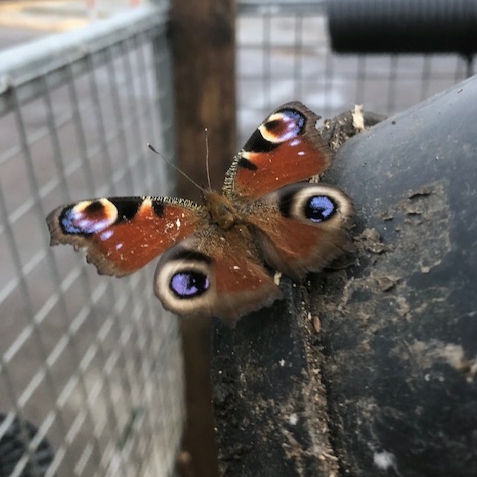
10 Dec Living Walls Aid Declining Wildlife
Urban greening is vital
Were you aware that, as well as being beautiful, living walls aid declining wildlife? Seeing this beautiful Peacock butterfly land in our new yard made us think. It reminded us of how important it is to create greener spaces, especially in our cities. Urban greening is not just a fashionable trend. It’s vital if we’re to halt the decline in wildlife species of all kinds. Living walls can be an enormous help in this regard, as they can be fitted into tiny spaces where a traditional garden is impossible.
A living wall fits in the tiniest space
Imagine a city block of flats where the only outside space belonging to each apartment is a balcony. Nevertheless, a vertical garden can still be installed. This creates an attractive, peaceful area of planting for the balcony owner, which is great. But it also adds a small but important habitat or food source for insects and birds. It might mean the difference between these creatures surviving or not.
Even where a property has a bigger outside area, the area available for planting has diminished in our gardens. In many cases, patios, decking, and paved driveways covering much of the surface area of our gardens. But a living wall at the side of your terrace or deck increases both the amount of planting and the kind of plants that might be chosen. Almost any fence or wall can have a vertical garden fixed against it, and every one helps local wildlife.
If you’re interested in the way that green walls can help insect pollinators in particular, click on the following link. It will take you to an article about Biotecture’s new living wall at the St John’s shopping centre in Liverpool, designed with bees in mind: Liverpool green wall for bees
And if you want a little vertical habitat of your own, give Rosewood a call on 01727 811448 to discuss what might suit your space. Every bit of green helps with increasing biodiversity and supporting wildlife in our cities.

